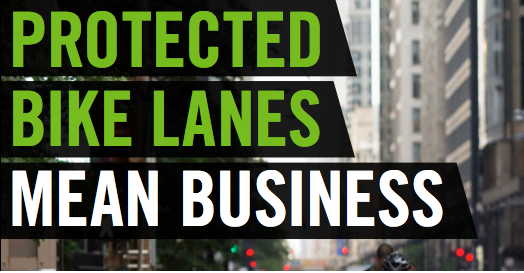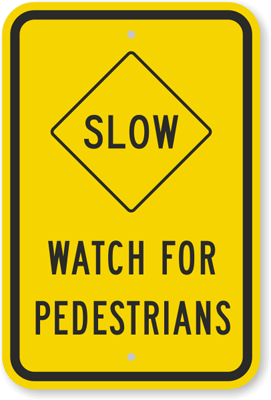(Source: http://www.sfbike.org/news/protected-bike-lanes-mean-business-in-sf-and-around-the-country/)
This June, the National Institute for Transportation and Communities released the final report of the first intensive study conducted on “Evaluating Protected Bike Lanes in the U.S.” The growing presence of various bike-friendly communities around the U.S. and consequently increasing bike traffic undoubtedly led the institute to compile and evaluate data that will aid in developing safer biking communities.
The study included data that examines protected bicycle lanes from five cities: Austin, TX; Chicago, IL; Portland, OR; San Francisco, CA; and Washington, D.C. This study purports to indicate the effects of protected bike lanes through surveys, video observation of ridership and interaction between bicyclists, motor vehicle drivers and pedestrians. The study gives strong indication that the vast majority (approximately 91%) of residents in a particular city support the presence of bike lanes: “residents and bicyclists indicated that any type of buffer shows a considerable increase in self-reported comfort levels over a striped bike lane…” The following are few of the various data revealed in the report:
- Nearly all cyclists (92%) who used the intersections with separate bicycle signal phases agreed that they felt “safe” when riding through the intersection. This exceeded all other intersection designs and is the only design evaluated where the protected lane carries all the way to the intersection.
- Designs with more physical separation had the highest scores for cyclist comfort. Buffers with objects (e.g. flexposts, planters, curbs, or parked cars) had higher comfort levels than buffers created only with paint
- Nearly every intercepted bicyclist (96%) and 79% of residents stated that the installation of the protected lane increased the safety of bicycling on the street. These strong perceptions of improved safety did not vary substantially between the cities, despite the different designs used.
- Three in four residents (75%) said they would support building more protected bike lanes at other locations. This support was strong even among residents who reported “car/truck” as their primary commute mode —69% agreement).
- Overall, 91% of surveyed residents agreed with the statement “I support separating bikes from cars”. This includes primary users of all modes (driving, walking, transit, and bicycling).
The report is full of data that generally indicate one clear message: Protected bike lanes are good and wanted by not only bikers, but also by pedestrians and motor vehicle drivers. This report is extensive in its research and, fortunately, includes surveys conducted on our very own San Francisco residents, solidifying the reasons why this city’s movement for a more bike-friendly environment is not for nothing.
(Source: http://ppms.otrec.us/media/project_files/NITC-RR-583_ProtectedLanes_FinalReportb.pdf)



